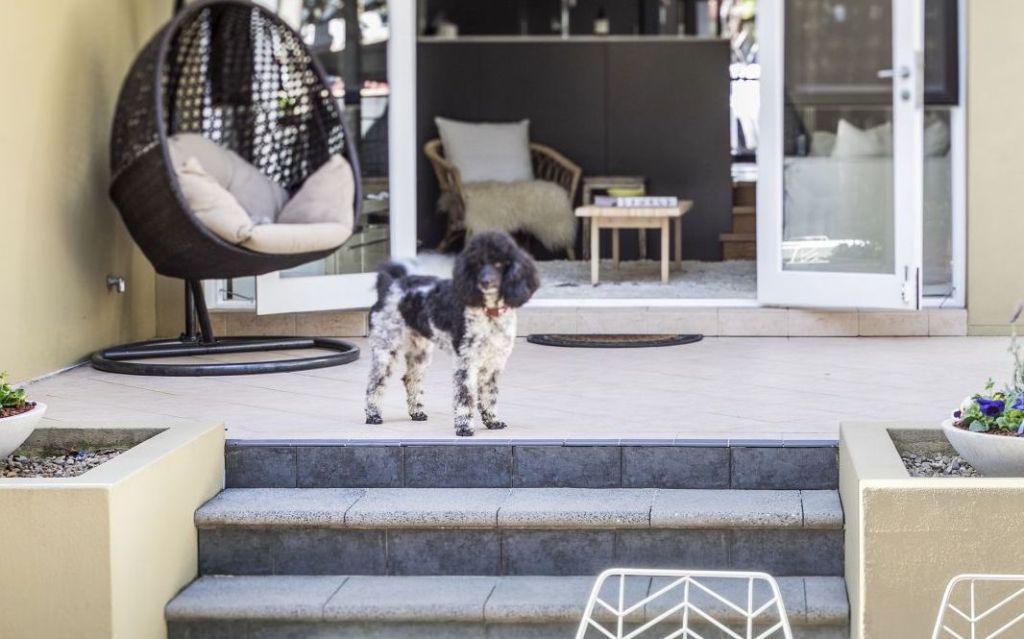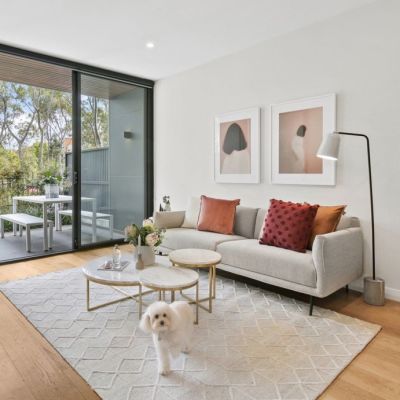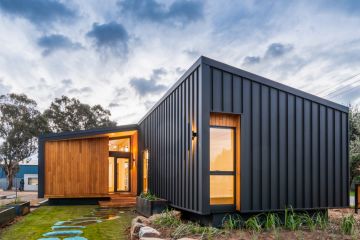Landlords who allow pets could boost their rental return by up to 30 per cent
Investors are always looking for ways to increase their rental return, but there’s one strategy that can boost rents by up to 30 per cent and it doesn’t involve renovating.
In almost every capital city, median asking rents for pet-friendly apartments are higher than for homes that don’t allow pets, according to Domain Group data.
That means landlords who allow pets could boost their rental return by simply checking a box.
Apartments advertised as pet-friendly are rarest in Melbourne, representing less than 3 per cent of all rentals, followed by Adelaide (6 per cent) and Sydney and Canberra (both 7 per cent).
Houses are more likely to be pet-friendly, but the proportion is still low in Melbourne (9 per cent) and Sydney (21 per cent). On the other hand, more than half of Greater Brisbane rental houses allow pets, while in Darwin, more than two-thirds are pet-friendly.
Proportion of properties advertised as pet-friendly | ||
| City | Houses | Apartments |
| Adelaide | 47% | 6% |
| Brisbane | 52% | 14% |
| Canberra | 39% | 7% |
| Darwin | 70% | 17% |
| Hobart | 37% | 9% |
| Melbourne | 9% | 3% |
| Perth | 49% | 10% |
| Sydney | 21% | 7% |
Sydney investors have the most to gain by allowing pets, according to the analysis of rental listings from the March 2019 quarter. Asking rents for apartments that allow pets are 11 per cent higher than those that don’t, which equates to $60 each week or $3120 per year.
With landlords in Sydney facing tougher competition as the rising supply of rental properties pushes down rents, allowing pets could provide investors with a point of difference and minimise the time a property remains on the rental market.
Sydney property manager and Property North Agency director Ben Benny said he always encouraged landlords to consider allowing pets to improve returns.
“We definitely see an increase in rents when properties are pet-friendly,” he said. “Hands down it’s the biggest inquiry we get for any property.”
In Melbourne and Darwin, rents for pet-friendly units are 8 per cent higher, and in Adelaide and Brisbane there’s a 5 per cent difference in price.
Premium highest for rare rentals
In areas where pet-friendly rentals are least common, the premium is often higher.
Less than 3 per cent of apartments in Sydney’s Canterbury-Bankstown area were advertised as pet friendly, but rents were 26 per cent higher, with landlords pocketing an extra $105 per week or $5460 per year.
In the Liverpool and Fairfield areas, only one per cent of apartments are pet-friendly, and are advertised for 18 per cent more, costing tenants an extra $60 each week or $3120 per year.
It’s a similar situation in Melbourne’s inner city, where less than one per cent of units allow pets and rents are 30 per cent higher. That trend continues among apartments in the inner east, northern suburbs and bayside areas.
Where renters with pets pay the biggest premium – apartments | |||||
| City | Region | Median rent – pets allowed | Median rent – pets not allowed | Price difference | |
| Melbourne | Inner city | $550 | $422.50 | $127.5 | 30% |
| Sydney | Canterbury/Bankstown | $515 | $410 | $105 | 26% |
| Sydney | Western suburbs | $400 | $330 | $70 | 21% |
| Sydney | Sutherland | $530 | $460 | $70 | 15% |
| Sydney | Northern suburbs | $510 | $450 | $60 | 13% |
| Brisbane | Southern suburbs | $430 | $380 | $50 | 13% |
| Sydney | Upper north shore | $580 | $515 | $65 | 13% |
| Melbourne | Bayside & south east | $450 | $400 | $50 | 13% |
| Perth | Western suburbs | $360 | $320 | $40 | 13% |
| Sydney | Inner city | $875 | $780 | $95 | 12% |
Although few rentals in Melbourne were advertised as pet-friendly, Lucas Real Estate senior property manager Emma Racky said this was relatively normal, and pets were often allowed on a case-by-case basis.
“People won’t be deterred from applying just because it doesn’t specifically say it’s pet-friendly,” she said. “It just depends on the owner’s preference. Some aren’t too fussed, but if it’s a new property, they’re worried about damage.”
Restrictive landlords limit their tenant pool
In Brisbane, where pet-friendly rentals are much more common, Realty8 principal Royden Juriansz said landlords were increasingly finding that pets were non-negotiable because tenants considered them part of the family.
“In Brisbane, you reduce the pool of tenants if you say it’s not pet-friendly,” he said.
“I love to give out a property which is pet-friendly because I know I’ll have a bigger pool of people coming through and the take-up is much faster.”
Where renters with pets pay the biggest premium – houses | |||||
| City | Region | Median rent – pets allowed | Median rent – pets not allowed | Price difference | |
| Brisbane | Inner city | $740 | $610 | $130 | 21% |
| Sydney | Northern beaches | $1,050 | $900 | $150 | 17% |
| Sydney | Hawkesbury | $450 | $395 | $55 | 14% |
| Canberra | Gungahlin | $630 | $560 | $70 | 13% |
| Sydney | Inner west | $800 | $720 | $80 | 11% |
| Sydney | Liverpool/Fairfield | $500 | $450 | $50 | 11% |
| Melbourne | Inner west | $500 | $450 | $50 | 11% |
| Sydney | Canterbury/Bankstown | $555 | $500 | $55 | 11% |
| Sydney | Eastern suburbs | $1,100 | $995 | $105 | 11% |
| Sydney | Lower north shore | $1,050 | $950 | $100 | 11% |
In Sydney, the northern beaches has one of the highest concentrations of pet-friendly houses. More than one-third of rental houses are pet-friendly, and landlords who allow pets can expect rents to be 17 per cent higher.
Pet ownership is common among families renting houses there, according to Benny, whose agency specialises in the area. But he said trends were changing.
“Over the past two or three years we’ve seen more of a shift towards younger couples,” he said. “We’re finding it more common for two-bedroom apartments.”
Although property damage is a concern for many landlords, Benny said it was not the only issue. “For strata buildings and apartments, the biggest concern is noise and upsetting other neighbours.”

Tips for landlords renting to pet owners
Pet-friendly properties will appeal to more tenants and can achieve higher rents, but there’s more to consider than just the rental return.
- Choose the right property and features – An apartment with a large outdoor area or a house with a big backyard will appeal more to pet owners. Durable flooring such as tiles is less likely to be damaged than polished floorboards or carpets.
- Have a pet renting policy – Stipulate the number of pets allowed, acceptable animals or breeds, and any size limits.
- Ask for a pet resume – Tenant are often happy to supply references from previous landlords or property managers. You may also wish to meet the pet beforehand.
- Investigate strata bylaws – Some complexes may not allow animals, while others have rules about the type or size of pet and may require residents to register pets or ask for permission first.
- Check your landlord insurance – Tenants are generally liable for damage caused by pets, apart from reasonable wear and tear, but it’s wise to check your insurance policy as well to find out exactly what is and isn’t covered.
- Claim repairs at tax time – The cost of repairing reasonable wear and tear, such as refinishing floors and repainting walls, can be deducted from your rental income to minimise your tax bill.
We recommend
States
Capital Cities
Capital Cities - Rentals
Popular Areas
Allhomes
More










